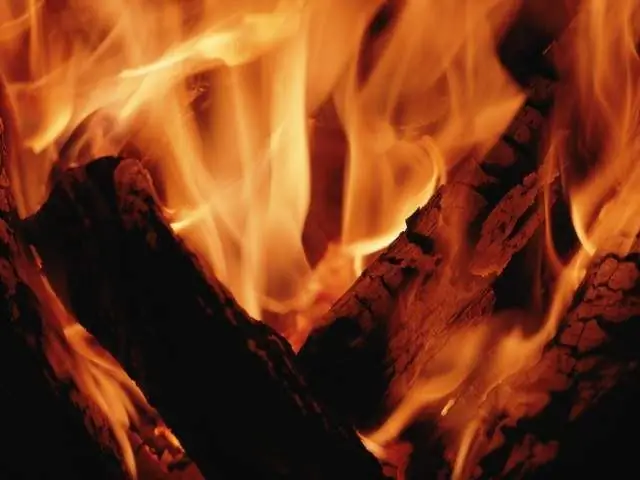Drawing the elements of nature is not an easy task for an artist. After all, these substances are very ephemeral, changeable, and you need to be able to catch and convey in a drawing one moment of their existence. You can start a training in drawing the elements with flames.

Instructions
Step 1
Use thin lines to mark the outlines of the logs. They will help you limit the areas where different colors are applied. It is not worth drawing tongues of flame with a pencil - these lines will be visible through the layers of paint. Color shades and transparency of flames can be best reproduced with watercolors. Since you will need to apply paint very quickly, mix the desired shades in the palette in advance.
Step 2
Mix light yellow and pink to get the lightest shade for your painting. Then combine orange and brick - this shade is more saturated. The next color combination is brown, brick and burgundy, as well as burgundy and dark brown. For ease of explanation, we will refer to each of the resulting shades as numbers from 1 to 4 in the order they are listed.
Step 3
Dampen a wide squirrel hair brush in clean water. Run it over the entire surface of the sheet (except for areas where logs will be drawn). While the paper is still wet, brush on the first mixed, lightest color. It can be seen in the center of the frame - draw a vertical line with a brush. Draw the same stroke from this line to the left, at an angle of about 30 degrees. Apply a thinner stroke on the right side of the sheet, next to the log.
Step 4
Wash the brush and scoop up the second shade with it. With wide smooth movements, distribute it next to the light areas - when they touch, these colors will begin to mix, and the transition from one shade to another will be smooth. Distribute the third shade between the resulting tongues of flame - this way you convey volume in the drawing, creating the illusion of space. Paint over the darkest areas with the fourth shade from the palette.
Step 5
When the first coat of paint is dry, fill the logs with color. On the darkest areas, apply a combination of brown and black. Areas caught in flames and smoldering, paint over with a mixture of brown, burgundy and orange. The side of the right log is the most illuminated - accentuate this with subtle strokes of yellow.






